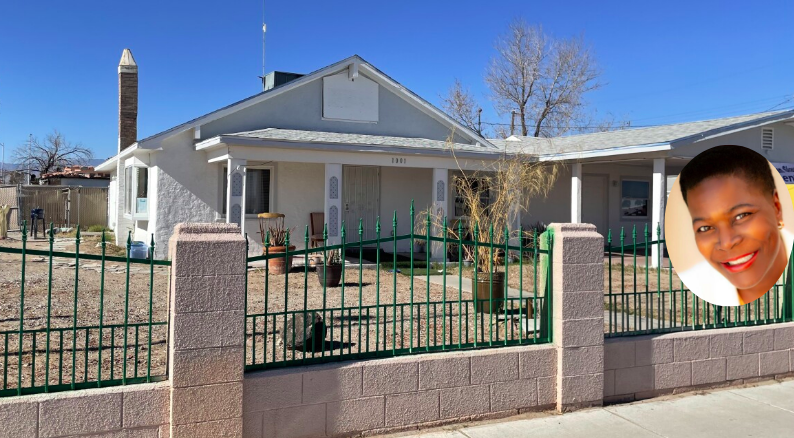Unificationist Preserves Black History in Las Vegas
Harrison House
“A lot of young people are surprised that segregation happened in America, but when they are here at the Harrison House it becomes obvious there is a stark contrast between the different parts of town that were designated for black people and white people,” says Katherine Duncan. “The story of Harrison House needs to be shared to overcome the past and also educate people in their responsibility of understanding it.”
Duncan, a longtime Unificationist, is preserving an important piece of U.S. history in Las Vegas. Just west of Interstate 15 sits a 1,700-square-foot home at 1001 F St. — a reminder of the city’s segregated past. The Harrison House hosted black entertainers throughout the 1940s and 50s when artists would perform at big hotels and casinos on the Las Vegas Strip but couldn't stay at the hotels there. The Harrison House became their home away from home.
“In those days, if you were a black artist or performer, the Harrison House was the place to be,” says Duncan, a historian and the executive director of the Harrison House. “In 1942, Genevieve Harrison opened up her home to entertainers, and that's what makes Harrison House unique. It was famous for visitors like Sammy Davis, Jr., Harry Belafonte, Pearl Bailey, and Joe Lewis.” recalls Duncan.
As segregation legally ended with the Civil Rights Act in 1964, the landscape of Las Vegas began to change over the years, eventually jeopardizing the future of the Harrison House. “It's been a very tough battle with historic preservation and restoration of buildings,” says Duncan. “The neighborhood where the house is located was scheduled to be wiped away for highrises, but we have come together as a neighborhood and community so we can plan for this area.”
Duncan purchased the Harrison House in 2009 and moved into the home in 2012. It underwent renovations, becoming a tourist stop for those looking to learn more about the city’s history. Now the Harrison House sits along the Pioneer Trail — a 16-site route chronicling the black excellence of the 1940s, 50s, and 60s.
“To be able to tell the story of the Harrison House and why it needs to be here has really changed my life,” says Duncan. “I leave the door open to whoever wants to come in. Harrison House is a way to share history in a non-threatening way that is educational.”
Duncan and the Harrison House have been regularly featured in local news highlighting Black History Month. The famous property was also among the stops of the Peace Road 2020 national tour.
“We talk about collectivism and being one family in the Unification movement,” says Duncan. “True Parents came to the U.S. to fix the problem of racism and other issues, but during segregation, it was illegal for blacks and whites to come together despite their teaching of integration. From True Parents, I learned how to understand this racial history in America and how to move forward from that with forgiveness and love for ourselves and others.”
With the help of Harrison House board members, including Unificationist Leslie Rigney, Duncan says a monthly healing and wellness program for the mind and body will be held at the property beginning in March.
You can learn more about the Harrison House here.


